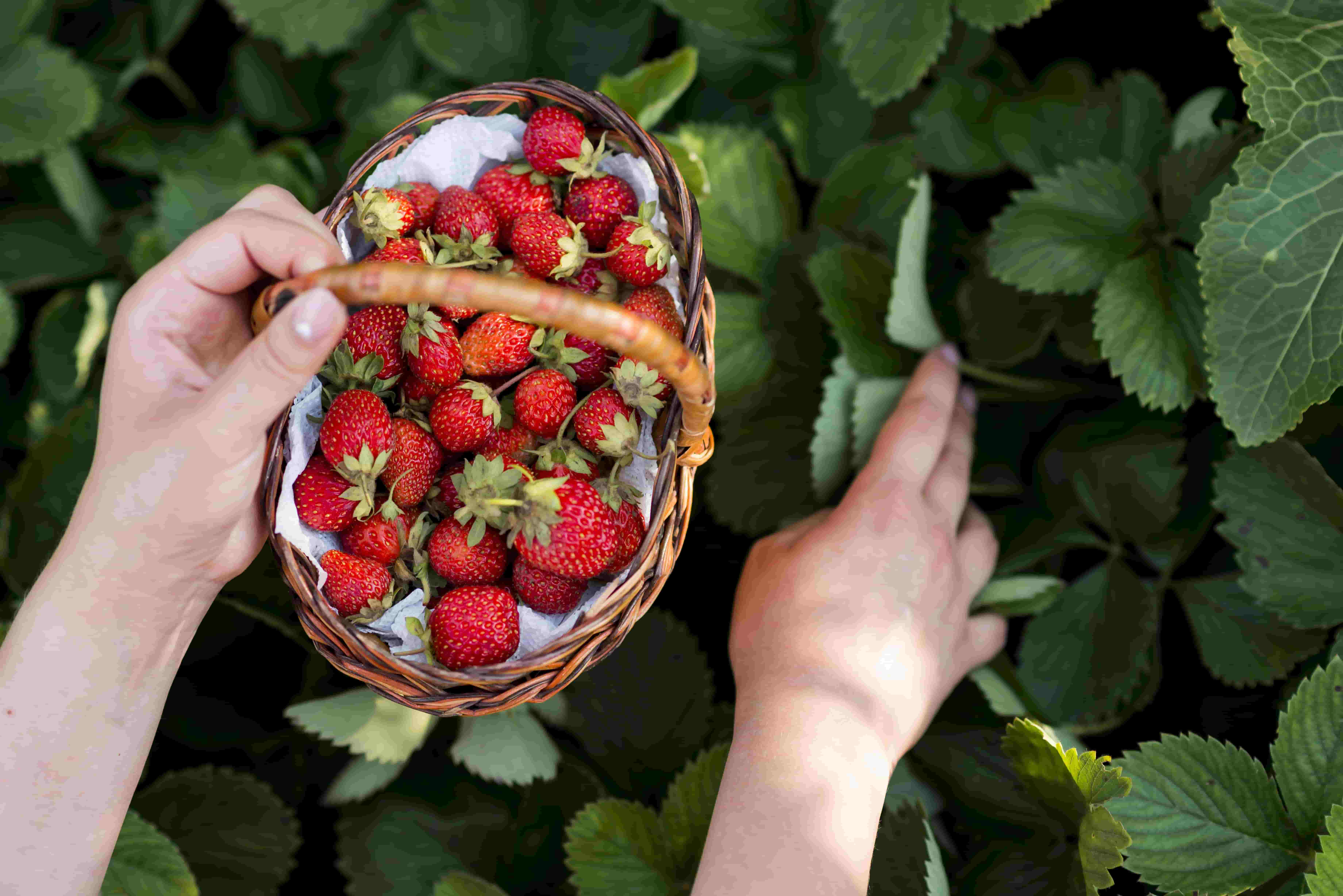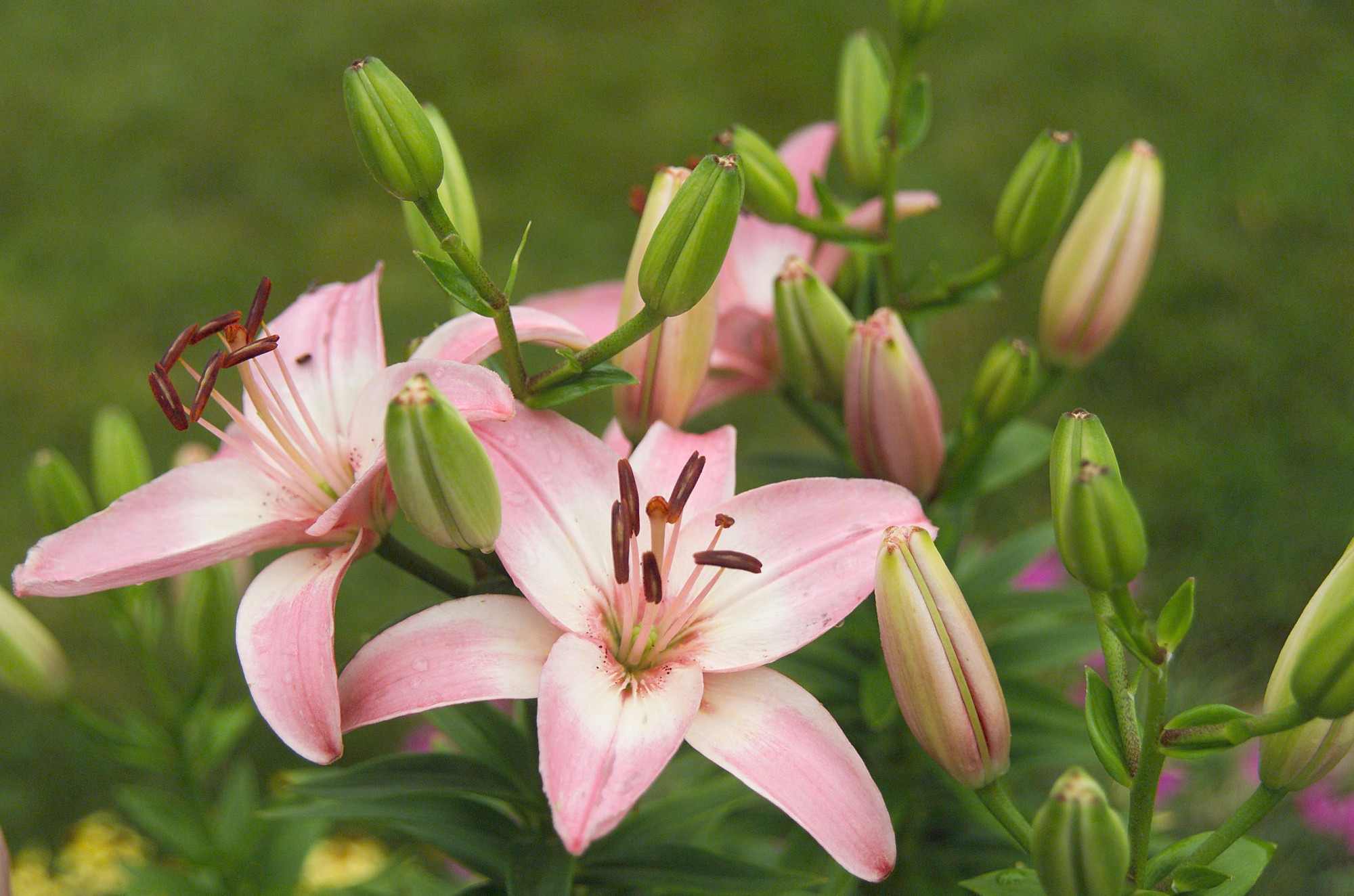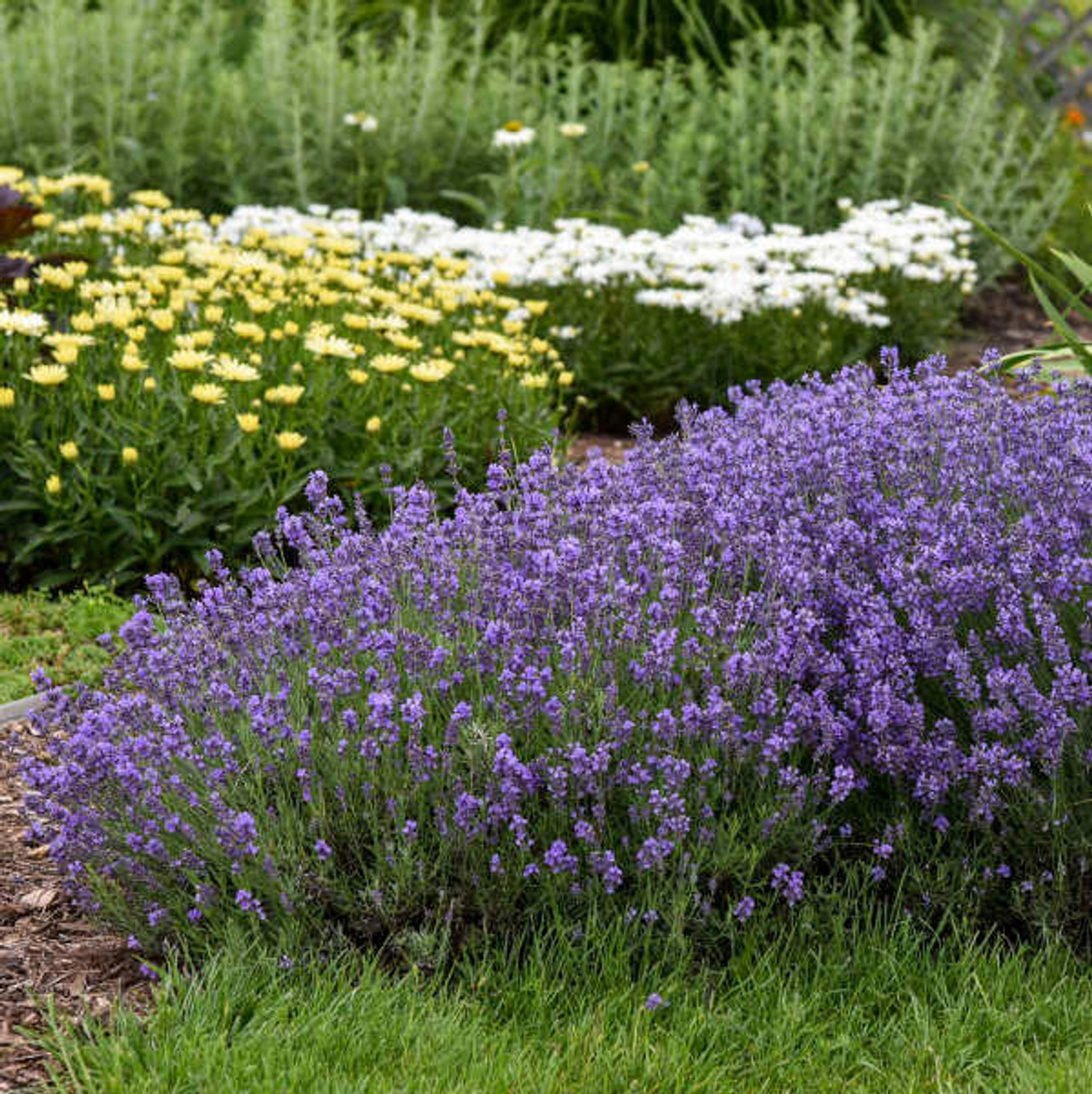When my oldest son found out that I grow strawberries, he had only one question: "What’s there to grow? They practically grow like weeds on their own."
Strawberries really are a very vigorous plant. To prevent summer from turning into a constant battle for the harvest, there are a few things you need to know. And the good news is that with modern technology, anyone can grow strawberries at home with relatively little effort. "Relatively little" means: plant / harvest/ care for the plants.
So, here’s the minimum you need to know before planting a strawberry bed.
Location. All berries loves sun. In the sun, sugars form, and the sweeter berry is preferred by most people. So, plant them in a spot where at least half of the day is sunny.
Planting scheme, distance, depth. Plant at least 50 cm apart. The planting schemes with distances of 30x40 are intended for intensive farming. At home (unless that’s your only job), you won’t be able to create those conditions. For varieties with large crowns (Malwina, Faith), I recommend even more space - 60-70 cm. In the first year of planting, the bed will look a little odd, but don’t give in to temptation. I planted Malwina about 40 cm apart in the first year, and by the next year, the field looked great—everything was fully grown, very tightly packed. Lots of berries. And they all rotted. I dug out every second plant. Depending on the amount of available land, you can have one or two rows. If you have a lot of land, then one row, if less, two rows. If you have very little land (for example, on a balcony), you can even plant them in a pot, but that’s a different story.
Planting depth. This is very important for strawberries, as they are very sensitive to this issue. Plant them to the root collar. The root collar is a small 0.5-0.7 cm (depending on the size of the plant) wide strip between the leaves and the roots. Another option is to plant up to the heart—the central part of the strawberry plant from which the new leaves and flower stems grow. The heart must always be above the soil, even if just by a millimeter.
Soil. Generally, in the valuable online advice repositories, the soil description is such that the only thing that’s clear is that it’s not worth getting into berry farming, because such soil only exists in your grandmother’s garden, where she’s been digging and fertilizing for twenty years. In reality, it’s not that bad. Sure, black earth has its advantages, but if you don’t have it, strawberries can grow almost anywhere. In some cases, you’ll need to water and fertilize more (sand), while in others, you’ll need to figure out how to make it looser (clay). And of course, each variety has its own preferences. One will grow in a humbler place, while another will need very fertile soil. How do you find out? By testing in real life. I personally always keep an eye on just one thing—the pH level. It should be within the desired range, which for strawberries is 5.5–6.5. So, you shouldn’t plant in pure peat or bog soil. How to measure pH and what to do if it’s not right? (See the article next to this one).
Planting time.
- Frigo plants – anytime, until the first weeks of August.
- Container plants – anytime.
- Bare-root plants – late April / early May, and then July / August.
- If the weather is warm, I’ve also read about successful December plantings, but I haven’t had personal experience with that. Where do these precise dates on the internet come from? From those focused on high yields, where every day counts. In home conditions, when you only get 300-400 grams of berries from one plant, it doesn’t play such a huge role. If you’re short on berries, you can always buy more, and if there are leftovers, you can make jam or wine.
Weeding. This point should be eliminated from your agenda as much as possible. It won’t be completely avoidable, but there’s an easy solution to minimize it. Black agro-fabric P50 works for 3–4 years without problems. Why agro-fabric? It helps reduce watering. Of course, you can also use plastic sheeting.
Watering. Again, the goal is to minimize the time spent on this. Drip irrigation is an investment that pays off when first set up. More on this in a separate article. Mulching significantly reduces the need for watering. Black agro-fabric is also a mulch, but if you add wood chips on top, watering becomes truly minimal. Straw can also be used, but there’s a nuance that needs to be understood. Organic straw is hard to find, while conventional straw often comes with residue. How much and how often should you water? This question used to bother me a lot at the beginning, and no one could give me a sensible answer. Now I realize that the answer can only be given if you’re growing in a greenhouse and know the substrate composition, variety, and weather forecast. In field conditions, the math and measurements are so complex that human experience and observation are the easiest solution. In the first few years, you might over-water or under-water, but if you closely monitor the plant, you’ll quickly notice when something’s wrong. Rolled-up leaves, drooping leaves, tiny, dried, or wilted berries—clearly, it’s too little water. If the roots are rotting and there’s water accumulating in the row, then maybe it’s time to stop watering ☺. It might sound not very wise, but there’s no alternative—watch the plant and make your conclusions.
Fertilization. 10 kg of rotted manure per square meter is enough to last for 3 years. Where to get manure? Right now, it’s only freely available from horse owners. It’s usually fresh, so you’ll need to buy it at least a year in advance. The other alternative is granular fertilizers. These are very convenient because at home, you can just sprinkle them in the planting hole (remember that any fertilizer must be mixed with soil). At first, the price might seem high—around 300 EUR per ton—but that’s until you calculate what you’re actually buying. It’s pure concentrated material, without water (usually, manure contains 40-60% moisture). And most importantly, it’s very convenient. One handful is the equivalent of an entire shovel. If you’re not buying bulk natural manure, granular fertilizers will definitely be cheaper than a bag of regular manure, which is usually sold for 2–3 EUR per bag. Of course, there are traditional fertilization schemes with NPK, but that’s a separate story, more suitable for intensive growing methods.

Fighting Pests and Diseases
I am essentially green-minded and, in addition, quite lazy, so I can’t offer advice on making infusions for every pest. However, my observation is as follows: if crop rotation is followed and the remnants of the harvest are returned to the soil, even in the form of mulch (which also fertilizes the soil), then it is completely enough for home conditions. What an ant or snail eats is not a big issue. At least, that’s how it is in our garden. Plus, both ants and snails are good indicators of ripeness and flavor. If an ant has gnawed on a strawberry, the sweetness and ripeness are just right.
Regarding diseases, the observation is similar, and there is only one piece of advice — remove diseased leaves, pick any rotting fruits, rake up old leaves and throw everything into the compost (though this should be used for other plants). Disease control can also be helped by playing around with varieties and finding one that best suits your growing conditions. I do not support cutting all leaves after harvest as a method of disease control. Yes, it’s easier, but one must understand this: strawberries set the new crop already in August or September, and if energy is spent on both leaf renewal and flower formation, it’s not particularly wise. Remove the sick plants, and that will be enough. If the plant is struggling, then change the variety, the location, and look for mistakes in your agrotechnics.
Pruning the Runners
While we can reduce weeding to a minimum, it’s hard to avoid pruning the runners. The only option is to select varieties that produce fewer runners. People often put off unpleasant tasks until the last minute and want to do everything in one go. The right way is to observe the strawberries and divide the task into at least two or three sessions (depending on the variety). The fewer runners, the more energy is left for the fruit. This is clear to everyone, and by the time of harvest, runners still need attention. However, if the plants are left alone after harvesting, they’ll head straight into the "forest of life" come autumn. Again, two things must be understood here:
- First, the crop for the next year depends on how the strawberry plant has been feeling this summer. If it was healthy, there will be many flowers next year. If not, there will be fewer. Therefore, don’t expect a forest of life, and make sure to visit your strawberry patch at least twice after harvesting. Remontant varieties will need even more attention.
- Second — if you leave the runners alone, they can spread up to 1.5-2 meters away, and then no one will want to prune them (since a single whip can have 3 or 4 plants), and they’ll simply be pulled out. When pulling them, something is always left behind, and next year, you’ll have a forest again.
Propagation
A small disclaimer — new varieties are usually protected by copyright, and it is officially not allowed to propagate them. I haven’t heard of any inspections in private gardens, but large-scale farms can be visited by control agencies. So, if you want to propagate, choose the most productive bushes and next year remove the flowers. The strawberry will start producing runners a bit earlier, and by autumn, the plants will be quite mature.
Can you harvest the fruits and still have runners? Yes, but then both tasks will be half-done. The yield will be lower in fruits, and the plants will be smaller by autumn. Smaller plants mean waiting longer for a harvest.
In the first year, an A-category plant will give 50-100 grams of fruit, while B-category usually gives 1-2 berries (about 20-40 grams, depending on the variety).
In Latvia, if the farm doesn’t specialize in growing seedlings, the plants sold in early August are usually B-category. Even when a farm specializes, A-category plants by August are rare. Specialized farms harvest plants after the first frosts when the strawberry leaves freeze, which happens in November. By then, the plants have matured enough, and you can get A, A+, or even A++ category plants. You can read more about plant categories here. The popular story that you can only take the first runner from the plant stems from this idea. In reality, you can take any runner, but the smaller ones (the last ones) will require a year longer to reach full production.
Quick Summary
If you follow these basic things — crop rotation, reasonable planting distances, mulching, watering, fertilizing, and timely pruning of runners — then a harvest is inevitable. Is it hard? With agrotech fabric and a watering system, the most time-consuming tasks are solved. You just need to plant, harvest, and prune the runners. There are no options there. But, it must be done by you! ☺ Although there are options here too. If you share your harvest, you can arrange for someone to help you. Or, even simpler — sell some of it (in small quantities, this is easy to do — usually, just a couple of friends with families are enough) and hire a weeder or runner pruner with the money you earn.
Good luck!


